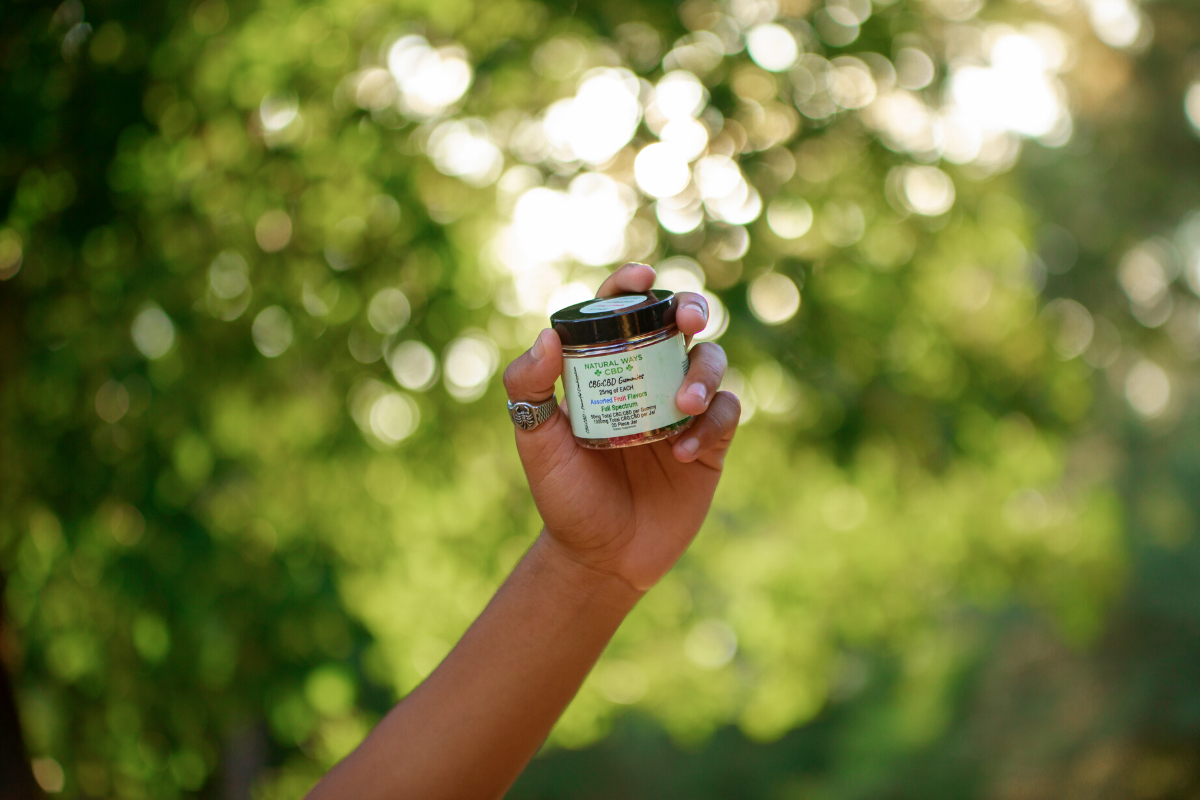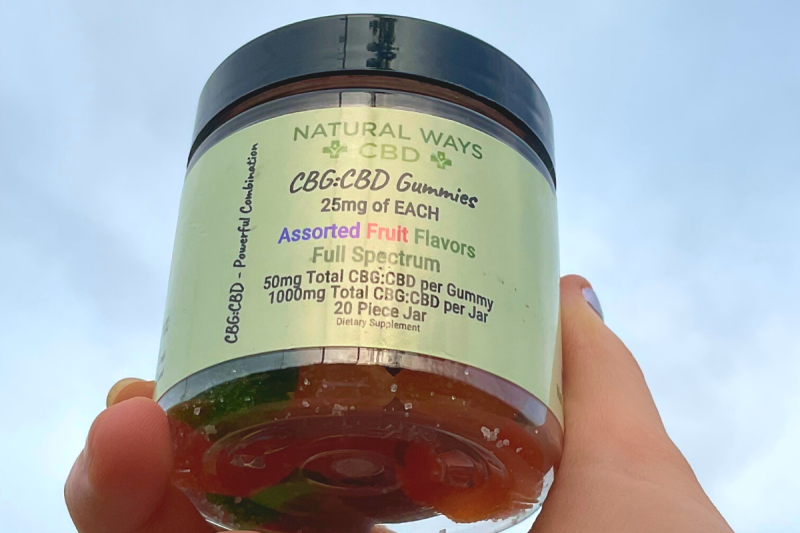The hemp plant has been researched for its beneficial effects on nausea, but so far, most of that research has focused on CBD (cannabidiol) and THC (tetrahydrocannabinol), two well-known cannabinoids in hemp that also have a variety of other benefits.
But there’s another cannabinoid with similar benefits: CBG (cannabigerol). Among other things, there is a bit of research to show CBG may help with nausea. In this article, we’ll discuss that research. We’ll also discuss how CBG works in your body, how it compares to CBD for nausea, and how best to use it.
What is CBG?
Cannabigerol (CBG) is a cannabinoid that naturally occurs in the hemp plant. Hemp is a variant of the cannabis sativa plant that contains less than 0.3% THC.
CBG is considered a minor cannabinoid, as it only occurs in hemp in small amounts. However, it’s actually the cannabinoid from which all others are derived. And despite its natural scarcity, it renders major benefits.
Research suggests CBG may have therapeutic potential for inflammation, pain, anxiety, nausea, and more.
Can CBG Help With Nausea?
Yes, CBG may have therapeutic potential for nausea. Although CBG hasn’t been researched as much as more-abundant cannabinoids like THC and CBD, there is one study suggesting CBG may have antiemetic (anti-vomiting and anti-nausea) properties.
A study done on rats found that CBG, by itself, suppressed acute nausea.
However, the research also found that CBG may nullify the beneficial effects of CBD on nausea, which means these cannabinoids are most beneficial for nausea if used separately [1].
This is notable because, for most therapeutic uses, combining CBG and CBD renders more benefits them using them by themselves.
The firsthand experiences of people who have tried CBG for nausea are also largely positive, with many reporting that it’s helped them.
Although CBG isn’t the only cannabinoid that has potential antiemetic benefits, many people prefer it over THC and CBD for this use because of its uplifting, energizing effect profile.
This allows people to take it during the day without impeding their activities. CBD is calming and relaxing, while THC is relaxing and will create a head high.
How CBG Works
CBG works by interacting with your body’s endocannabinoid system (ECS), a receptor system that regulates all of your vital functions, including inflammatory and pain response, body temperature, and eating.
The ECS works to keep your body in a state of homeostasis, or balance – healthy ECS function is associated with normal states of health.
Introducing outside cannabinoids, such as CBG, may help to promote the functions of your ECS, which therefore helps it balance your body.
There are two main types of receptors in your ECS:
- CB1 receptors, which create mental sensations when stimulated
- CB2 receptors, which create physical sensations when stimulated
CBG can bind to both receptor types, thereby creating both mental and physical benefits, including potential antiemetic effects.
CBG vs. CBD for Nausea
CBD (cannabidiol) is another cannabinoid in hemp that offers a similar variety of benefits as CBG does.
It’s one of the most popular cannabinoids due to its wide range of therapeutic benefits and high abundance in the cannabis/hemp plant.
Like CBG, CBD may have antiemetic effects. One review of studies found that CBD may be “effective clinically for treating both nausea and vomiting produced by chemotherapy or other therapeutic treatments” [2].
Researchers haven’t compared how well CBG and CBD work for nausea. What we do know is that you should choose one or the other, instead of using them together, because CBG may reduce CBD’s antiemetic benefits (and vice versa).
Because we don’t have comparative research, when it comes to deciding which cannabinoid to choose for nausea, we recommend considering what effects you want to feel.
CBG is energetic and uplifting, and it tends to promote feelings of mental clarity. CBG won’t get you high, though – its effects are more comparable to caffeinated coffee. CBD, on the other hand, is calming and relaxing, and like CBG, it won’t create a high.
Based on this, you might find that CBG is preferable for daytime nausea, while CBD is better at night.
How to Take CBG for Nausea
There are several ways you can take CBG for nausea. Here’s a bit about the different types of CBG products:
CBG Oil
CBG oil consists of hemp extract (CBG) and carrier oil. CBG oil is taken under the tongue, where it can enter your bloodstream through the mucous membranes on the bottom of your mouth.
Due to this direct delivery method, CBG oil begins working in just 10-15 minutes. Another major upside of CBG oil is that you can measure and take very precise doses.
CBG Edibles
CBG edibles, such as gummies, offer a fixed-dose consumption method, so they’re great if you need to take the same amount of CBG consistently.
Since gummies are typically sweet and fruit-flavored, they may be preferable if you’re dealing with nausea and feeling sick. However, edibles have to be digested, so they take between 45 minutes and 1 hour to begin working.
CBG Capsules
CBG capsules offer an alternative to edibles if you prefer to take things in capsule form.
There are several types of capsules available: there are classic capsules, and then there are softgels, which enclose CBG oil in a digestible gel-like outer casing. Like edibles, capsules begin working in 45 minutes to 1 hour.
CBG Inhalables (Flower & Vapes)
CBG-dominant strains of hemp flower, as well as CBG vapes, are two other product options that are available.
Inhaling CBG poses an obvious health risk, but flowers and vapes begin working in just 5-10 minutes, as they deliver CBG directly to your lungs.
It may be worth it for the fast onset, however, if you’re dealing with nausea and also struggling with a sore throat, you might not feel like smoking or vaping anything.
CBG Dosage for Nausea
Although researchers haven’t specified the best dose of CBG for nausea, anecdotal evidence suggests lower doses are more effective.
Starting out, you can calculate your dose using this formula:
(0.1) x (your body weight in lbs.) = your daily CBG dose for nausea in mg.
Once you’ve taken this dose a few times, adjust it depending on how it’s working for you.
The dosage amount this formula gives is enough for 1 day; you can either take it all at once as a preventative measure against nausea, or, you can take smaller amounts throughout the day as needed.
Conclusion: Is CBG A Viable Natural Supplement for Nausea?
While CBG hasn’t been researched very much for use with nausea, studies so far suggest it may have therapeutic potential in this area, and anecdotal evidence tends to corroborate this.
What scientists haven’t investigated is how effective CBG is for nausea in relation to other cannabinoids, or to over-the-counter drugs – as more research is done, we’ll better understand which cannabinoids are best for nausea.
CBG is worth a try for nausea, but if you’re searching for long-term nausea treatment due to ongoing discomfort caused by treatment for cancer or other ailments, we recommend discussing your options with a doctor beforehand to ensure the option you’re choosing is sustainable.
Ready to explore products? Check out our guides to the best CBG gummies and best CBG oil.
CBG for Nausea: Frequently Asked Questions
Here are some questions our customers frequently ask us about using CBG for nausea.
Does CBG help with nausea?
Research and anecdotal evidence suggests CBG may have antiemetic (anti-nausea and anti-vomiting) effects.
What does CBG do for your stomach?
Research suggests CBG may have anti-nausea and anti-vomiting benefits, however, more studies are needed to investigate how CBG works for stomach disorders.
Which cannabinoid is best for nausea?
Studies show that THC, CBD, and CBG all may have benefits for nausea, however, there isn’t research comparing their efficacy for this use.
Does CBG stimulate appetite?
Yes, research and anecdotal evidence suggests CBG has appetite-stimulating properties.
Why does CBG make me feel good?
CBG interacts with the endocannabinoid system, a transmitter network in your body that controls every vital function used for moment-to-moment functioning. By supporting your ECS, CBG promotes mental and physical balance – the effects are as pleasant as they are beneficial.
What is CBG best used for?
CBG has a laundry list of therapeutic uses, but people mostly use it for physical discomfort and daytime energy and focus.
Sources
[1] Rock EM, Goodwin JM, Limebeer CL, Breuer A, Pertwee RG, Mechoulam R, Parker LA. Interaction between non-psychotropic cannabinoids in marihuana: effect of cannabigerol (CBG) on the anti-nausea or anti-emetic effects of cannabidiol (CBD) in rats and shrews. Psychopharmacology (Berl). 2011 Jun;215(3):505-12. doi: 10.1007/s00213-010-2157-4. Epub 2011 Jan 18. PMID: 21243485.
[2] Parker LA, Rock EM, Limebeer CL. Regulation of nausea and vomiting by cannabinoids. Br J Pharmacol. 2011 Aug;163(7):1411-22. doi: 10.1111/j.1476-5381.2010.01176.x. PMID: 21175589; PMCID: PMC3165951.








